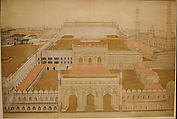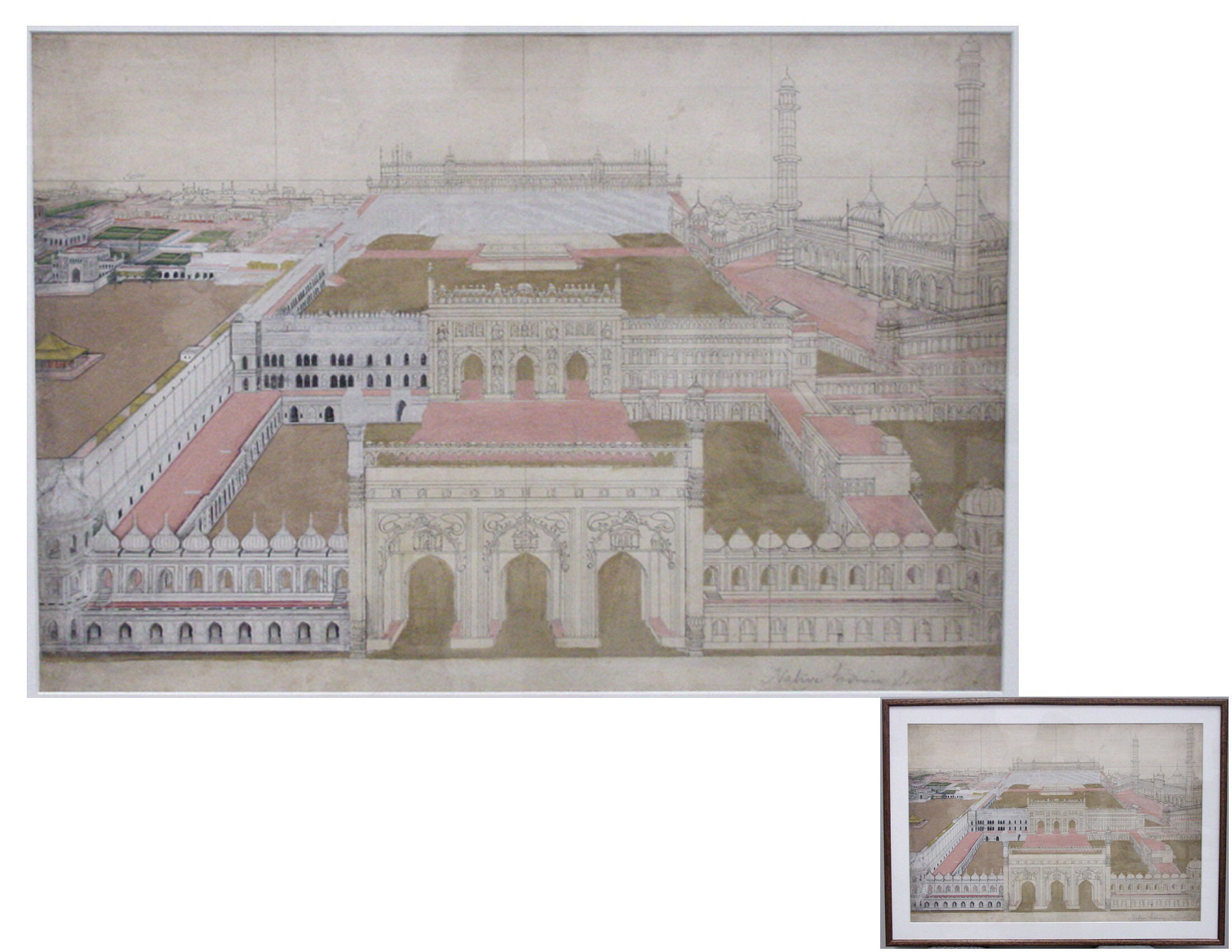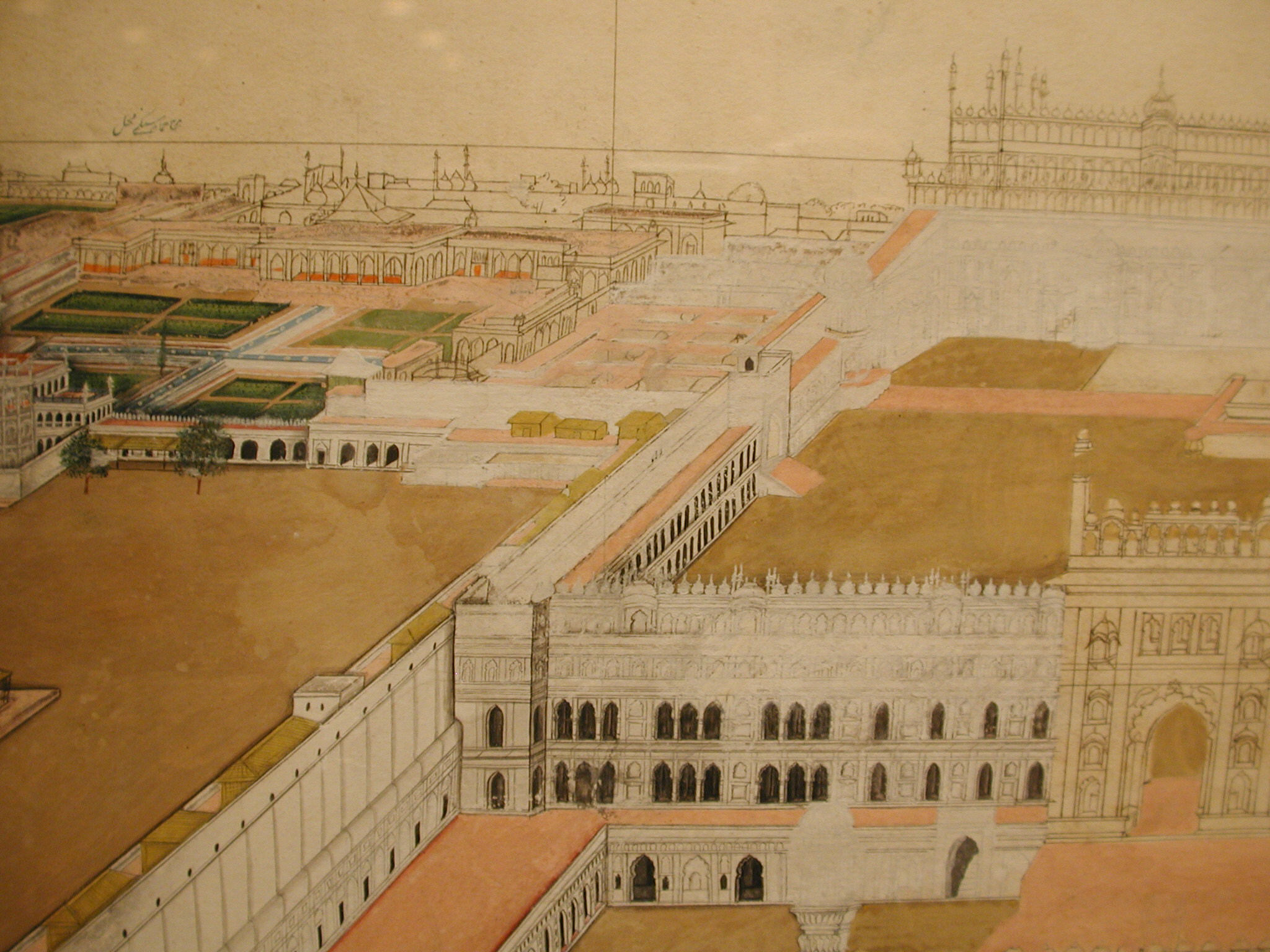The Bara Imambara Complex at Lucknow
Not on view
The unknown artist of this work has created a bird’s-eye view of the Bara Imambara complex in the style of a European topographical study. It is a valuable historical record of several parts of the site, which were demolished during the Indian uprising of 1857. The distant gardens and structures seen on the upper left, for example, no longer exist. The Bara Imambara, whose name means “big shrine,” comprises the massive congregational mosque (seen at an angle at the upper right) and several interlocking forecourts. It is an important place of worship for Shia Muslims, who celebrate the religious festival of Muharram. This massive structure was commis-sioned by Nawab Asaf al-Daula of Lucknow as part of a famine-relief project.
Due to rights restrictions, this image cannot be enlarged, viewed at full screen, or downloaded.
This artwork is meant to be viewed from right to left. Scroll left to view more.





